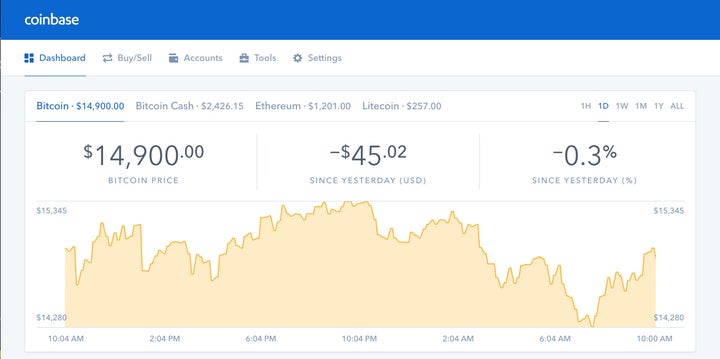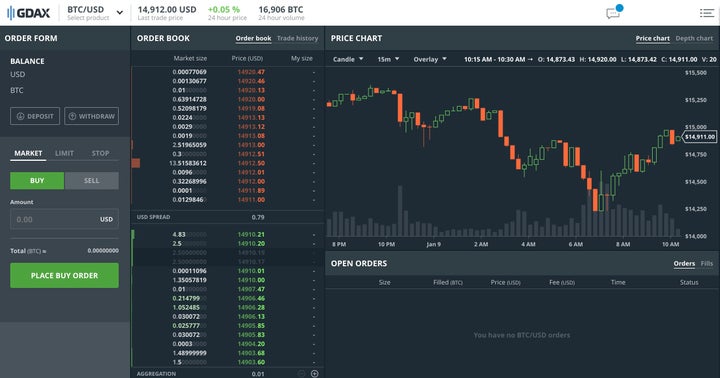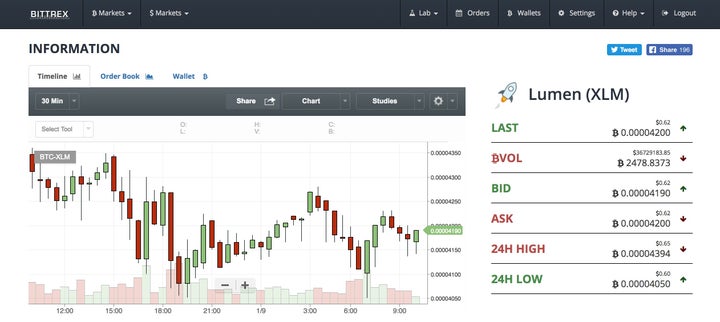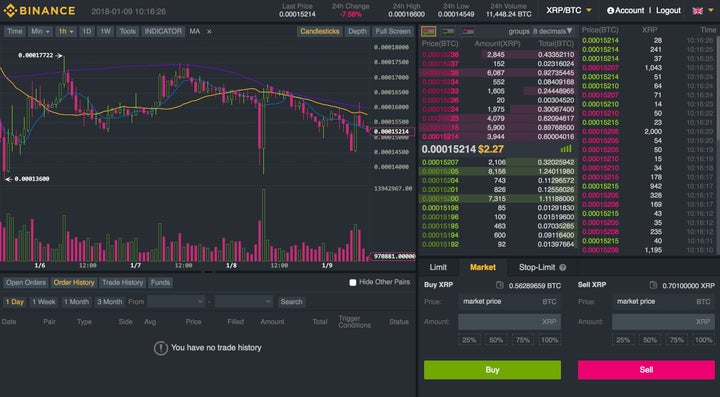
One of the biggest stories in technology and finance for 2018 is the rise of cryptocurrencies as an investment class and asset. Following a massive run-up in 2017, where Bitcoin dominated headlines, this previously fringe trend is quickly becoming mainstream for both retail and institutional investors. It’s a popular topic on Main Street, as you’ve likely experienced around the proverbial water cooler, and Wall Street recently launched a futures market with ETFs being considered. If you want to see what it’s about, the following guide will get you started in trading this new type of asset.
First, a quick disclaimer: I’m not an investment advisor. This is not an endorsement for cryptocurrency trading. It should not be misconstrued as a recommendation to invest or trade. Rather, if you independently decide you want to trade in crypto, this outlines how to go about it.
As you probably know, cryptocurrencies such as Bitcoin and Ethereum are digital coins that exist on a secure and decentralized computer network known as a blockchain. This is a relatively new technology that secures asset trading between two or more parties without an intermediary i.e. banks or governments. The blockchain provides a trusted, peer-to-peer transfer of value on a distributed public ledger that records every transaction and is immune to tampering. This is the core disruption and why cryptocurrencies have risen so dramatically in the past couple years. It cuts out the middle men. It reduces friction, and it returns power, authority, and autonomy to the individual.
Since the debut of Bitcoin as the first viable cryptocurrency in 2009, hundreds of digital currencies have followed. Many are the result of Initial Coin Offerings (ICOs), which are crowdfunding-like events that enable companies to raise capital in new ways. Instead of selling stock, the company issues proprietary coins that can be used as currency on its network (through various forms of utility) and, in turn, can be traded on the open market. This has created what is now a $700 billion market, as of this writing according to CoinMarketCap, which some expect to grow to $10 trillion in the coming years.

CoinBase Interface
To get started in trading cryptocurrencies, you need to get your fiat currency e.g. U.S. dollars, into the market. The most common way to do this is through CoinBase, one of the largest cryptocurrency exchanges. So big, in fact, that the company has struggled to keep up with a recent spike in both new users and trading activity.
CoinBase has made it easy to link your bank account and/or credit card to its system and, in turn, to trade four of the top crypto coins: Bitcoin (BTC), Ethereum (ETH), Bitcoin Cash (BCH), and Litecoin (LTC). (I won’t get into the specifics or pros/cons for each coin, as that’s beyond the scope of this post.) There are two fundamental ways to get your funds onto the exchange: wire/transfer into a corresponding USD cash account or buy the coins directly. This can be done through both the CoinBase mobile and web apps.

GDAX Interface
While the CoinBase interface is great for getting started, I’d recommend transitioning to the company’s more advanced GDAX trading solution if you want to do anything more than buy and hold. This is a more sophisticated way to buy and sell with features including limit and stop limit trades that are common on stock market interfaces. Your coins and USD currency can be freely transferred between CoinBase and GDAX. You can also transfer USD funds directly to GDAX through various means. If these four coins are the only ones you plan to trade, then GDAX is all you need. However, if you’d like to explore the full range of “alt coins” in the crypo universe, you’ll need to register with additional exchanges.
There are more than a dozen cryptocurrency exchanges, and most have one thing in common: the base currency is BTC. This means that you cannot directly transfer or transact in USD. You start by transferring BTC from CoinBase (in this example) into your wallet on the exchange and then proceed to trade other cryptocurrencies using BTC.

Bittrex Interface
So let’s assume you want to trade Ripple (XRP) and Stellar Lumen (XLM). These are currently third and eighth in market cap—$90 billion and $11 billion—respectively, according to CoinMarketCap. One of the many exchanges that support both is Bittrex. But let’s also assume you want to buy IOTA (MIOTA), which is ninth in market cap at $10 billion. Bittrex doesn’t currently support this coin. So you’ll have to explore others such as Binance. In both cases, you’d transfer BTC from your CoinBase or GDAX wallet into your Bittrex or Binance wallet. Just be sure you’re going from one BTC wallet to another. If you tried to transfer from an ETH wallet to a BTC wallet, there is a risk of losing those funds. This is one of the inherent flaws in crypto exchanges...that this mistake is even possible.

Binance Interface
Once you have BTC funds in one of the broader exchanges, you can start to trade in other cryptocurrencies such as those cited above. But it’s not the easiest or most intuitive user experience.
Remember that you’re trading in base BTC currency. And since cryptocurrency is infinitely divisible (but typically out to eight decimal places), it means you’re often using 0.0000XXYZ of BTC to buy one alt coin that could be in the $0.XY USD range. The calculations can be confusing.
When you initially transfer BTC into the exchange and start trading, there’s no way (I’ve found) to easily track how that initial transfer and subsequent trading performs relative to the original USD cost basis. So measuring profit or loss across and within these exchanges is somewhat manual, as are the US tax implications. The volatility makes this even harder, as the value of the base currency (BTC) and all others are fluctuating dramatically day to day. Which just means you’ll want to maintain a spreadsheet to track your investments and trading activity until the native tools improve.
Other cryptocurrency exchanges include Poloniex, Bitfinex, Kraken, KuCoin, Quoine, Gemini, CEX.io, coss.io, HitBTC, and bithumb.
Again, I’m not endorsing any of the exchanges or recommending that you invest or trade in cryptocurrencies. But if you want to know how to do it, this is the step-by-step process. In future posts, I’ll explore some of the coins and exchanges in more detail, while covering the broader growth of crypto and the blockchain technology upon which it is built.
